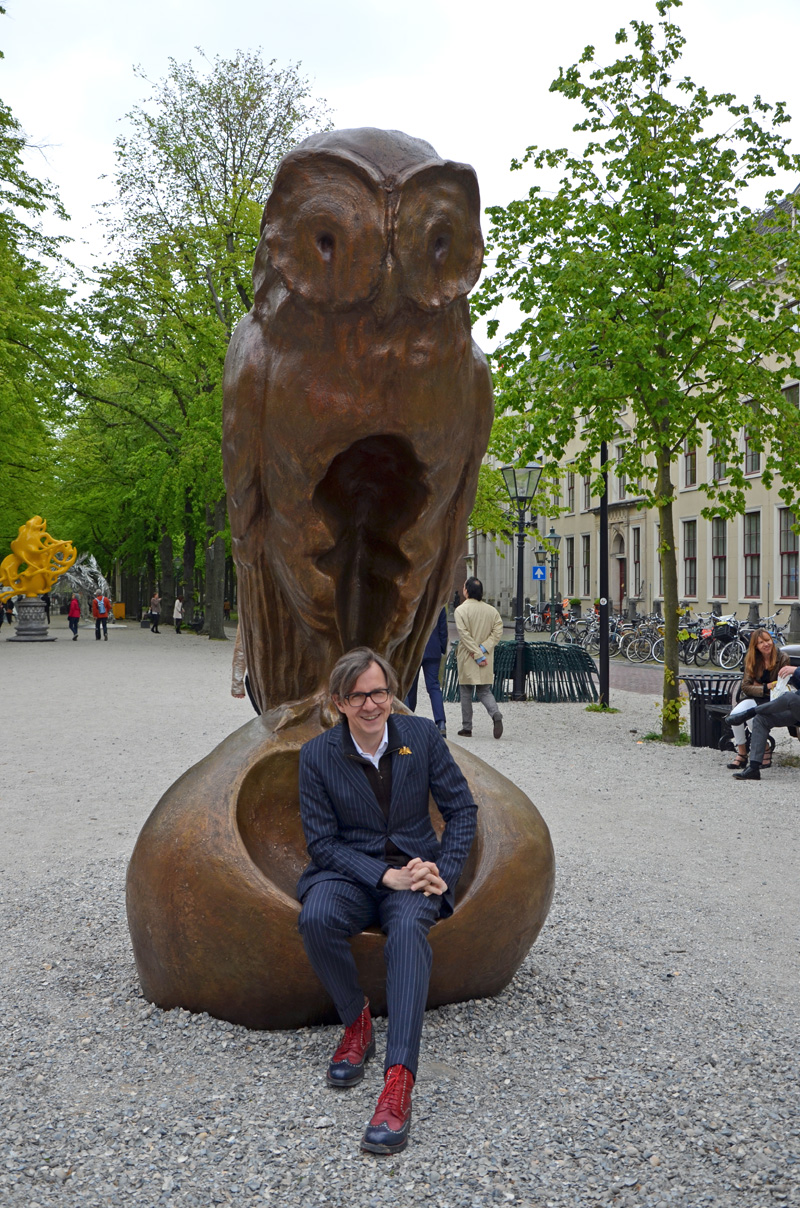De jaarlijkse grote sculptuurexpo in Den Haag heet in 2015 ‘Vormidable’. Museum Beelden aan Zee laat in het eigen museum, op het Lange Voorhout en op enkele satellietlocaties, zien hoe Vlaamse kunst vanaf de jaren negentig een ware revival beleefde. Panamarenko, De Bruyckere, Fabre, maar ook minder bekende namen vernieuwden de beeldhouwkunst – op twee tegenovergestelde manieren.
Gastconservator Stef van Bellingen (kunstcentrum WARP) is enthousiast: nergens, ook niet in België, is eerder zo’n grote overzichtstentoonstelling geweest van hedendaagse Vlaamse beeldhouwkunst. Aanleiding voor de tentoonstelling is het vriendschapsjaar ‘Beste Buren’, de twintigste verjaardag van een cultureel samenwerkingsverband tussen Nederland en Vlaanderen.
Zo’n twintig jaar geleden ligt ook het startpunt van de werken op de expositie. Begin jaren negentig zat de Vlaamse kunst in de lift. In 1992 was Jan Hoet gastcurator van Documenta, Antwerpen was in 1993 culturele hoofdstad van Europa. Het was de generatie die rond 1992-1993 van de academies kwam, die de Vlaamse kunsten zou vernieuwen.
Jurassic Park
Een vernieuwing die twee kanten opging. Aan de ene kant gebruikten de kunstenaars de wonderen van de digitale techniek. Panamarenko liet zich inspireren door de animaties in de film Jurassic Park, Wim Delvoye imiteert in zijn versie van het Antwerpse Brabo-beeld de ‘morphing’ in de clip ‘Black or white’ van Michael Jackson.
Aan de andere kant verzetten kunstenaars zich tegen die digitalisering. Zij stelden keramisch werk weer op de voorgrond, werkten figuratief en gebruikten oude technieken en ambachten. Gips (binnen) en brons (buiten) zijn de materialen van de twee bij elkaar horende engelen waarmee Johan Tahon de twee tentoonstellingen met elkaar verbindt. Peter Buggenhout verwerkte zelfs diereningewanden in zijn sculpturen.
Stromae
Van Bellingen heeft ervoor gekozen van elke kunstenaar meer dan één werk te tonen, om een breder beeld te geven. De naam ‘Vormidable’ verwijst natuurlijk naar de hit ‘Formidable’ van de Belgische popartiest Stromae. Van Bellingen: ‘Ik dacht aan Stromae, en aan de vorm van sculptuur. Verbasteren en neologismen maken, dat is typisch Vlaams.’
Die speelsheid en dubbele betekenis treffen we veel aan op de tentoonstelling. De Mens erger je niet-spelers van Sven ’t Jolle zijn zonder het zelf te weten ook pionnen. Wesley Meuris plaatste zowel in het museum als buiten façades als bouwpakketten, waar niets achter blijkt te zitten. Omgekeerd staat de kleine zaal van Beelden aan Zee vol maquettes, die niet dienen voor de bouw van iets groters, maar die als kunstwerken op zichzelf staan.

Vooral het openluchtgedeelte op het Lange Voorhout geldt ieder jaar als grote publiekstrekker. Ook wie minder thuis is in de kunstgeschiedenis en –beschouwing kan zich laten vermaken en uitdagen. Ga eens vrijwillig in de gevangenis van Leo Copers zitten (na inworp van een euro kunt u er 5 minuten écht niet meer uit!) of snuif de kruidige geuren op van de met harken en gras bedekte ‘Earth car’ van Peter de Cupere.
Selfie-machine
De gedoodverfde ‘selfie-machine’ is nu al de enorme uil van Johan Creten op de kop van het Lange Voorhout. ‘Le Grand Vivisecteur’ heet hij eigenlijk, en hoewel de uil symbool staat voor wijsheid en uitnodigt te gaan zitten, draagt hij ook symboliek van de dood en duisternis in zich, en zijn titel verwijst naar wreedheden, begaan omwille van de goede zaak. Creten benoemt ook die dubbelzinnigheid als typisch Vlaams: ‘We hebben allemaal iets hybride in ons, iets manisch-depressiefs.’
- Koningin Mathilde van België en koningin Máxima openen gezamenlijk de tentoonstelling op woensdag 20 mei.
- Meer informatie over locaties, tijden en prijzen op www.beeldenaanzee.nl

Foto boven: Jesse van Sofie Muller, op de achtergrond Entrance Kit for Sculpture Garden III van Wesley Meuris (foto auteur)
